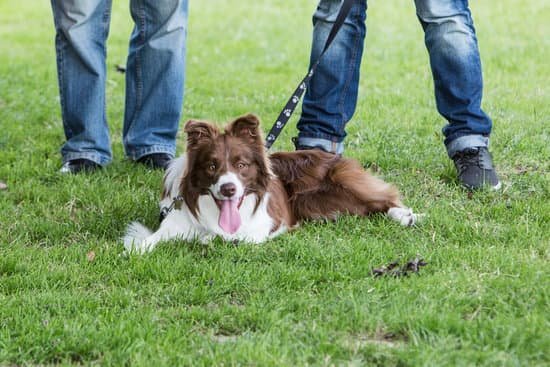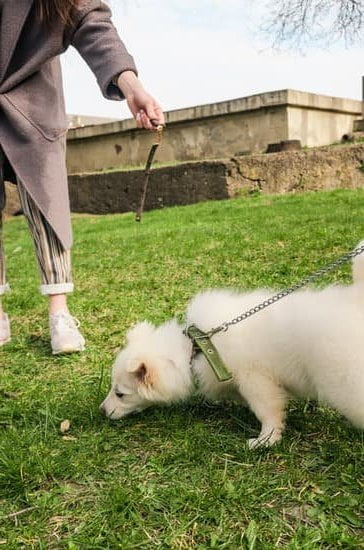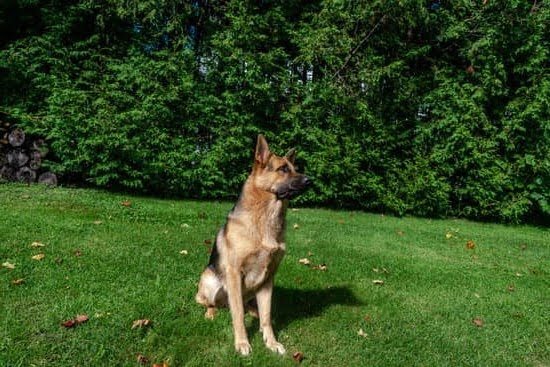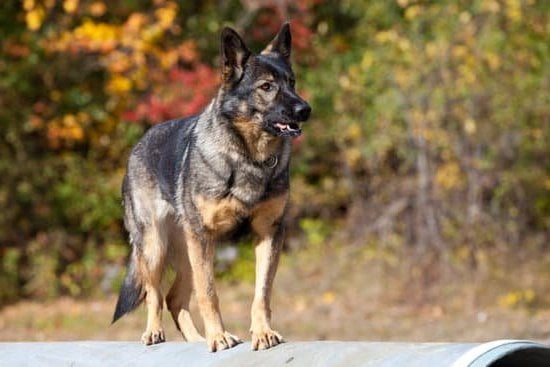Is training your dog to pay attention becoming a challenge? Whether you have a new puppy or an older dog, teaching them to focus on you is crucial for successful training. In this article, we will explore the importance of attention training and provide valuable tips and techniques for improving your dog’s focus.
Training a dog to pay attention is a fundamental aspect of obedience and behavior modification. It lays the groundwork for effective communication between you and your pet, leading to better overall behavior and responsiveness. To achieve this, understanding the basics of dog training is essential, as it forms the foundation for successful attention training.
Creating the right environment for attention training is also important. By setting the stage with minimal distractions, you can help your dog develop their focus more effectively. In addition, using positive reinforcement and reward-based strategies play a key role in encouraging attention from your furry friend.
By following these essential principles, you can overcome common obstacles in attention training and establish a consistent routine for success. Let’s delve into the techniques and strategies that will help improve your dog’s attention span and behavior – because a well-trained, focused canine makes for a happier owner.
Understanding the Basics of Dog Training
Positive Reinforcement
One of the fundamental principles of dog training is the use of positive reinforcement. This means rewarding your dog for good behavior, such as paying attention to you. When your dog looks at you or responds to a command, providing a treat or verbal praise can strengthen this behavior. Using positive reinforcement not only encourages your dog to pay attention but also helps build a strong and trusting bond between you and your canine companion.
Consistency and Patience
Consistency and patience are key components in successful attention training. Dogs thrive on routine, so it’s important to enforce consistent rules and expectations. Using the same commands and gestures each time can help your dog understand what is expected of them. Additionally, it’s crucial to be patient with your dog as they learn to focus their attention. Training takes time and effort, so staying calm and composed will ultimately lead to better results.
Understanding Canine Behavior
To effectively train a dog to pay attention, it’s essential to have a basic understanding of canine behavior. Dogs communicate through body language, vocalizations, and subtle cues. By learning how dogs express themselves, you can better connect with your pet and encourage them to pay attention to you. K9-1.com offers resources that delve into the intricacies of dog behavior, providing valuable insights on how to effectively communicate with your four-legged friend during training sessions.
By mastering these foundational principles of dog training, you can establish a solid framework for teaching your dog how to pay attention. Whether you’re working with a new puppy or an older dog, applying these basics will set the stage for successful attention training in the future.
Setting the Stage
Minimizing Distractions
One key aspect of setting the stage for attention training is minimizing distractions. Choose a quiet, familiar space where your dog feels comfortable and able to focus. This may be a room in your home or a quiet corner of your yard. By reducing environmental distractions, you can help your dog concentrate on the training exercises at hand.
Using Consistent Cues
Consistent cues are another important aspect of creating the right environment for attention training. Using verbal cues or hand signals consistently helps teach your dog to recognize when they should be paying attention. Consistency will help them understand what is expected of them, making it easier for them to focus on the task at hand.
Eliminating Stressors
It’s also important to eliminate stressors from the training environment. Dogs may have different stress triggers, so it’s important to identify and minimize them during training sessions. Whether it’s loud noises, unfamiliar scents, or other pets, knowing what stresses out your dog will help create a more conducive environment for attention training.
By setting the stage with minimal distractions, consistent cues, and reduced stressors, you can create an ideal environment for attention training. The K9-1.com approach provides valuable resources and methods that can assist in this process of creating the right environment for successful attention training.
Building Focus
When it comes to training your dog to pay attention, building focus is a crucial step. Without the ability to maintain their attention on you, your commands, and essential tasks, other training efforts may be futile. Fortunately, there are several techniques and exercises that can help improve your dog’s attention span.
One effective technique is known as “focus games,” where you work on capturing and maintaining your dog’s attention in various situations. This could involve using treats or toys to reward your dog when they respond to your cues and maintain eye contact with you. Another helpful exercise is “name recognition,” which involves teaching your dog to respond promptly when called by their name. Using positive reinforcement during these exercises can further encourage your dog to pay attention.
In addition, incorporating regular mental stimulation activities for your dog can also improve their overall focus. Mental challenges such as puzzle toys or obedience training sessions can help keep their minds engaged and attentive. By providing the right mix of mental and physical exercises, you can help build up your dog’s ability to pay attention even in distracting environments.
As you work on these techniques with your dog, it may also be beneficial to seek professional guidance from resources like K9-1.com. Their methods and resources are designed to assist pet owners in effectively training their dogs to pay attention and follow commands consistently.
| Technique | Description |
|---|---|
| Focus Games | Games that capture and maintain a dog’s attention through positive reinforcement |
| Name Recognition | Teaching a dog to respond promptly when called by their name |
| Mental Stimulation Activities | Puzzle toys and obedience training sessions that engage a dog’s mind while improving focus |
Using Positive Reinforcement
Training a dog to pay attention is essential for effective communication and obedience. Using positive reinforcement is a powerful tool for encouraging attention in your dog. Positive reinforcement involves rewarding your dog for exhibiting the desired behavior, making them more likely to repeat it in the future. This section will explore various reward-based strategies that can help you in training your dog to pay attention.
One effective way to use positive reinforcement for attention training is through the use of treats or toys. When your dog focuses their attention on you, immediately reward them with their favorite treat or a quick game of fetch. This creates a positive association with paying attention, making it more likely that they will continue to do so in the future.
Another strategy is to incorporate verbal praise and affection as rewards for attention. When your dog looks at you or responds to a command, enthusiastically praise them with phrases like “good boy/girl” or “well done,” and give them plenty of pats and cuddles. Dogs crave human interaction and approval, so this type of positive reinforcement can be highly motivating for them.
Additionally, using clicker training can be an effective way to reinforce attention in your dog. A clicker is a small device that makes a distinct clicking sound when pressed, which signals to the dog that they have done something right and will receive a reward. By pairing the clicker with treats or praise whenever your dog pays attention, you can quickly establish a strong connection between focused behavior and positive outcomes.
| Reward-Based Strategies | Examples |
|---|---|
| Treats or Toys | Using treats or toys as immediate rewards for paying attention |
| Verbal Praise and Affection | Offering enthusiastic verbal praise and physical affection as rewards for focusing on you |
| Clicker Training | Pairing the clicker sound with treats or praise when your dog pays attention |
Training your dog to pay attention using positive reinforcement requires consistency and patience. Over time, these reward-based strategies can build a strong foundation for improved focus and responsiveness from your canine companion. For additional guidance on how to train a dog to pay attention using positive reinforcement, resources such as K9-1.com offer valuable methods and insights that can enhance your training experience.
Overcoming Distractions
One of the most challenging aspects of training a dog to pay attention is helping them stay focused in distracting or stimulating environments. Dogs are naturally curious and easily drawn to various sights, sounds, and smells, making it difficult for them to concentrate in these situations. However, with the right techniques and strategies, you can help your dog overcome distractions and maintain their focus during training sessions.
To address this issue, here are some tips for helping your dog stay focused in challenging situations:
1. Gradual exposure: Introduce your dog to distractions gradually by starting in a low-stimulation environment and gradually exposing them to more distractions as they progress in their training.
2. Controlled environment: In the beginning stages of training, choose a quiet and familiar setting where your dog is less likely to be distracted. As they become more proficient at paying attention, gradually transition to more stimulating environments.
3. Use positive reinforcement: When your dog successfully maintains their focus despite distractions, be sure to reward them with treats, praise, or toys. This will reinforce the behavior and motivate them to continue paying attention in challenging situations.
By implementing these tips and consistently practicing attention training using K9-1.Com’s proven methods and resources, you can help your dog develop the necessary skills to maintain focus even when faced with distractions. With time and patience, you’ll see significant improvement in your dog’s ability to pay attention regardless of the environment they’re in.
Consistency Is Key
Training a dog to pay attention is an essential skill that can improve your pet’s behavior and strengthen the bond between you and your furry friend. Consistency is key when it comes to attention training, as dogs thrive on routine and predictability. Here are some tips for establishing a solid routine for attention training:
1. Schedule regular training sessions: Set aside dedicated time each day to work on attention training with your dog. This could be during walks, playtime, or specific training sessions focused on improving focus and attention.
2. Use consistent cues: Whether it’s a verbal command or a hand signal, be consistent in using the same cue for asking your dog to pay attention. This will help your dog understand what is expected of them and reinforce their behavior over time.
3. Practice patience and persistence: Rome wasn’t built in a day, and neither is a well-trained dog. Be patient with your pet and continue to practice attention training regularly, even if progress seems slow at first.
By establishing a routine for attention training with your dog, you can set them up for success in various situations and environments-whether it’s walking through a busy park or participating in obedience competitions. K9-1.com offers valuable resources and methods for effectively training your dog to pay attention, helping you achieve the desired results through consistency, patience, and positive reinforcement techniques.
Troubleshooting Common Problems
Training a dog to pay attention is an important skill that can greatly improve the bond between you and your canine companion. However, like any form of training, there are often obstacles and challenges that can arise along the way. In this section, we will address some common problems that you may encounter when attempting to train your dog to pay attention, and provide strategies for overcoming them.
One common issue that dog owners face when training their pets to pay attention is distractions. Dogs are naturally curious animals, and it can be difficult for them to focus in environments with a lot of stimuli. To combat this, it’s important to gradually introduce distractions into your training sessions. Start in a quiet, familiar environment before gradually adding more challenging elements such as other people, animals, or noises.
Another common problem is inconsistency in training methods. If you are not consistent in your approach to attention training, it can confuse your dog and hinder their progress. It’s important to establish a routine for training sessions and stick to it. Use the same cues and commands each time, and ensure that all members of your household are on the same page when it comes to training techniques.
Additionally,
By understanding the common problems that may arise during attention training and implementing effective strategies for overcoming them, you can set yourself and your dog up for success in improving their focus and responsiveness. With patience, consistency, and the right approach, you can train your dog to pay attention effectively using methods from
The K9-Om Approach
The K9-1.Com approach to training focuses on using balanced methods that incorporate both positive reinforcement and fair corrections, resulting in well-behaved and attentive dogs. Their methods are based on the principle of building a strong relationship with your dog through trust, respect, and effective communication. By understanding and implementing their training techniques, you can effectively train your dog to pay attention in various situations.
K9-1.Com offers a wide range of resources to support dog owners in their training journey. From online courses and webinars to instructional videos and books, they provide comprehensive guidance on how to train a dog to pay attention. These resources cover topics such as obedience training, behavior modification, and problem-solving strategies for common issues related to attention and focus.
One of the key elements of the K9-1.Com approach is the emphasis on understanding canine behavior and psychology. By learning about the natural instincts and drives of dogs, you can tailor your training methods to suit their individual needs.
This approach not only enhances your ability to capture and hold your dog’s attention but also strengthens the bond between you and your furry companion. Through the K9-1.Com approach, dog owners can gain valuable insights into how their dogs think and learn, making it easier to train them effectively.
Overall, embracing the K9-1.Com approach can greatly benefit dog owners seeking to improve their pet’s attention skills. By incorporating their methods and utilizing their resources, you can develop a harmonious relationship with your dog built on trust, communication, and mutual understanding. With patience, dedication, and the right guidance from K9-1.Com, you can successfully train your dog to pay attention in any environment or situation.
Conclusion
In conclusion, training a dog to pay attention is crucial for building a strong and cooperative relationship with your furry companion. By understanding the basics of dog training, creating the right environment, using positive reinforcement, and overcoming distractions, you can effectively build your dog’s focus and attention span. Consistency is key in establishing a routine for attention training and addressing any common problems that may arise along the way.
One valuable resource that can aid in your journey to train your dog to pay attention is K9-1.com. Their methods and resources offer valuable insights and strategies for effective attention training. By accessing their expertise, you can gain a deeper understanding of how to approach attention training and navigate any challenges that may come your way.
Overall, proper attention training not only improves obedience but also strengthens the bond between you and your dog. With patience, dedication, and the right tools at your disposal, you can successfully train your dog to pay attention and enjoy the benefits of a well-behaved and attentive canine companion.
Frequently Asked Questions
How Do I Train My Dog to Be K-9?
Training a dog to be K-9 involves specialized and rigorous training programs that focus on obedience, agility, search and rescue, apprehension work, and scent detection. It also requires advanced training in tracking, criminal apprehension, and handler protection.
How Do I Teach My Dog to Pay Attention?
Teaching a dog to pay attention begins with establishing a strong bond through regular positive reinforcement training sessions. Using treats or toys as rewards can help reinforce the desired behavior of paying attention when commanded.
How Long Does It Take to Train a K-9 Police Dog?
The length of time it takes to train a K-9 police dog varies depending on the tasks it needs to perform and its individual progress. Generally, it can take anywhere from 6 months to a year for a police dog to complete its initial training program.
Continuing education and maintenance training are also essential for ongoing development throughout the dog’s career.

Welcome to the blog! I am a professional dog trainer and have been working with dogs for many years. In this blog, I will be discussing various topics related to dog training, including tips, tricks, and advice. I hope you find this information helpful and informative. Thanks for reading!





